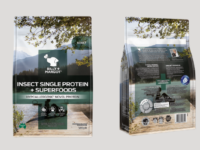 According to the latest findings from Roy Morgan Research, one third of the population (or, 6.5 million Australians aged 14+) buy at least one chocolate bar in an average four weeks – with almost five million of them making the purchase at a supermarket.
According to the latest findings from Roy Morgan Research, one third of the population (or, 6.5 million Australians aged 14+) buy at least one chocolate bar in an average four weeks – with almost five million of them making the purchase at a supermarket.
In the year to June 2015, 4.9 million Aussies bought at least one chocolate bar from a supermarket in any given four week period – accounting for more than three quarters (76 per cent) of the chocolate bar buying public.
Convenience stores/petrol stations come a very distant second, accounting for eight per cent of all chocolate bar buyers (or 498,000 people), but still well ahead of vending machines (a fraction over one per cent or 86,000 people) and milk bars/corner stores (also just over one per cent, or 81,000). Curiously, 13 per cent of people who bought chocolate bars can’t say where they made their purchase.
Given that a higher proportion of women than men are their household’s main grocery buyer, it makes sense that women are slightly more likely than men to buy chocolate bars at the supermarket. Seventy eight per cent of total female chocolate bar buyers make their purchase at the supermarket, compared with 74 per cent of their male counterparts.
However, men outnumber women when it comes to buying chocolate bars just about everywhere else: from milk bars/corner stores and newsagents, to cafes/takeaways/sandwich bars, vending machines and sporting grounds.
“Since 2011, there has been a marginal decline in the proportion of Australians 14+ buying chocolate bars in an average four week period, from 35 per cent to 33 per cent. This decrease is evident across most places of purchase, except for supermarkets, which are holding steady,” Andrew Price, GM– consumer products, Roy Morgan Research, said.
“Of course, if we’re already at the supermarket doing the grocery shopping, it’s easy and convenient to pick up a chocolate bar while we’re there. But that doesn’t explain why people who never do the groceries are almost as likely as main grocery buyers to purchase chocolate bars at the supermarket,” Price said.
Cadbury 50mg bars, such as Dairy Milk, or Top Deck, are the most popular brands purchased at supermarkets and milk bars/corner stores, but are practically deadlocked with Kit Kats for top spot at convenience stores. Meanwhile, Snickers is the hands down number one chocolate bar purchased from vending machines.
“Of all non-grocery-buyers who purchase chocolate bars in an average four weeks, 75 per cent buy them at the supermarket – only slightly behind those who usually do the groceries (77 per cent). Even considering how much cheaper chocolate is at the supermarket, it seems unlikely that such a large proportion of non-grocery buyers would make a special trip to the supermarket simply for a chocolate bar. However, even these people must presumably need to visit a supermarket for the occasional item.”
“While it is impractical for other retailers to compete with supermarkets in terms of price, they might benefit from considering how else to entice shoppers to buy chocolate bars from them. Gaining an in-depth understanding of who buys which brand of chocolate bar — their demographics, attitudes, consumption habits and more— would be a logical starting point.”
















